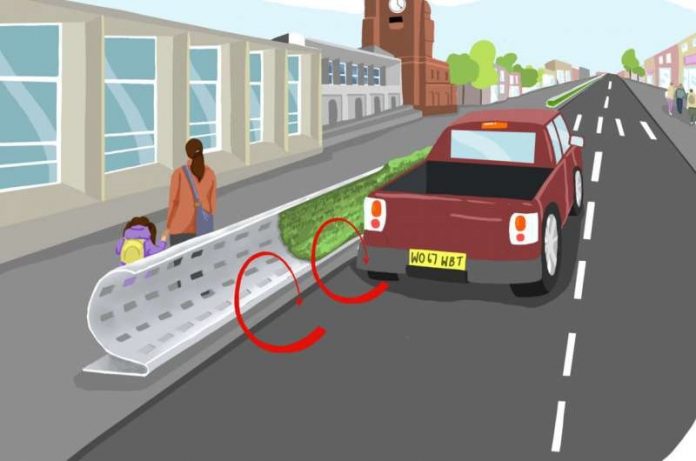With air pollution becoming an increasingly dangerous global health challenge, researchers are constantly working on innovating novel solutions to tackle these 21st-century problems. Researchers are using airflow modeling techniques to study the effects of unique roadside structures to deflect particulates away from pedestrians.
The health concerns arising from lower air quality are more significant amongst lower-income communities which are more likely to be situated near heavily traffic-laden thoroughfares. Similarly, children are both more vulnerable to and more readily exposed to air pollution simply due to their proximity to the ground, where heavier pollutants settle over time.
They started researching the effect of walls along roads and it became evident that along the pedestrian side of these roadside walls, there are vortices where the air quality can actually be even worse as the pollutants get trapped in them.
Initially building off simple models, they explored ideas of urban design that would mitigate these vortex effects and improve air quality for pedestrians and especially children.
Inspired by airfield baffles and the curved sound-walls alongside motorways in Germany and the Netherlands, the researchers found that curved structures would more effectively disperse and reflect pollutants back towards the roads and would very rapidly improve air quality for pedestrians in an inexpensive manner.
Although there are challenges in implementing this sort of urban furniture, such as road visibility, the researchers are confident that the net gain in air quality and health is immediate and significant enough to warrant further exploration of these ideas. Beyond air quality, these curved barriers would also mitigate noise pollution and would be able to act as scaffolds to increase green infrastructure throughout large cities.
The focus is very much on successfully reducing exhaust fumes, but there are these things we can do now to protect our children. The different sciences, urban designers, and architects should collaborate more to design these solutions to achieve air quality improvements at local scales more effectively and quickly.
Despite the hurdles, researchers are optimistic about the future of the project. With increased attention being placed on the challenges associated with air pollution, there is a need for unique and effective urban design, and these curved baffling barriers are able to tackle these challenges head-on, providing immense benefits to the general public.








